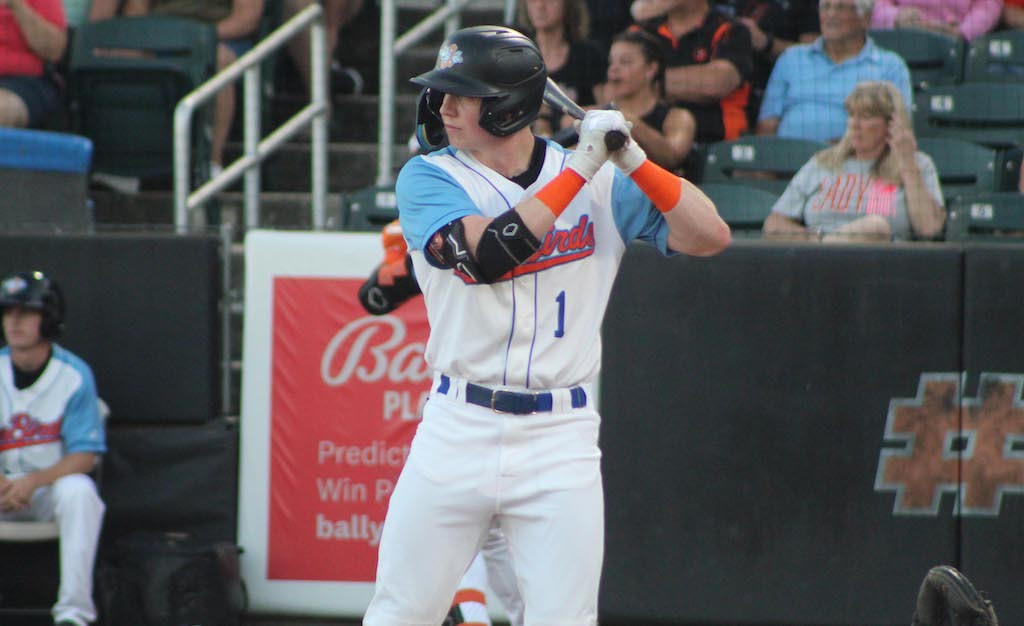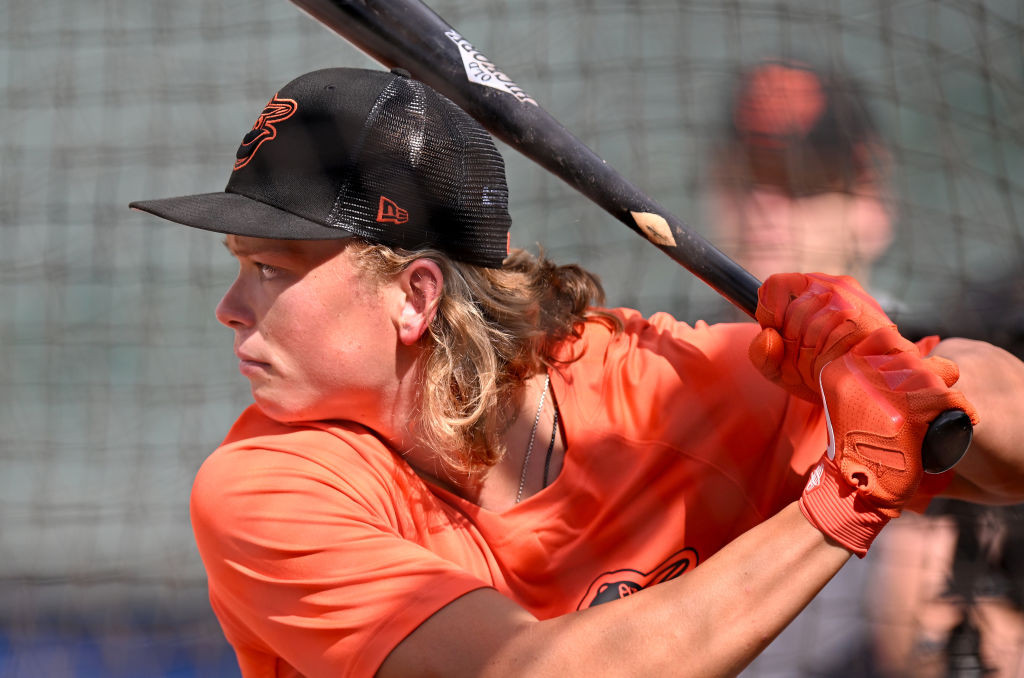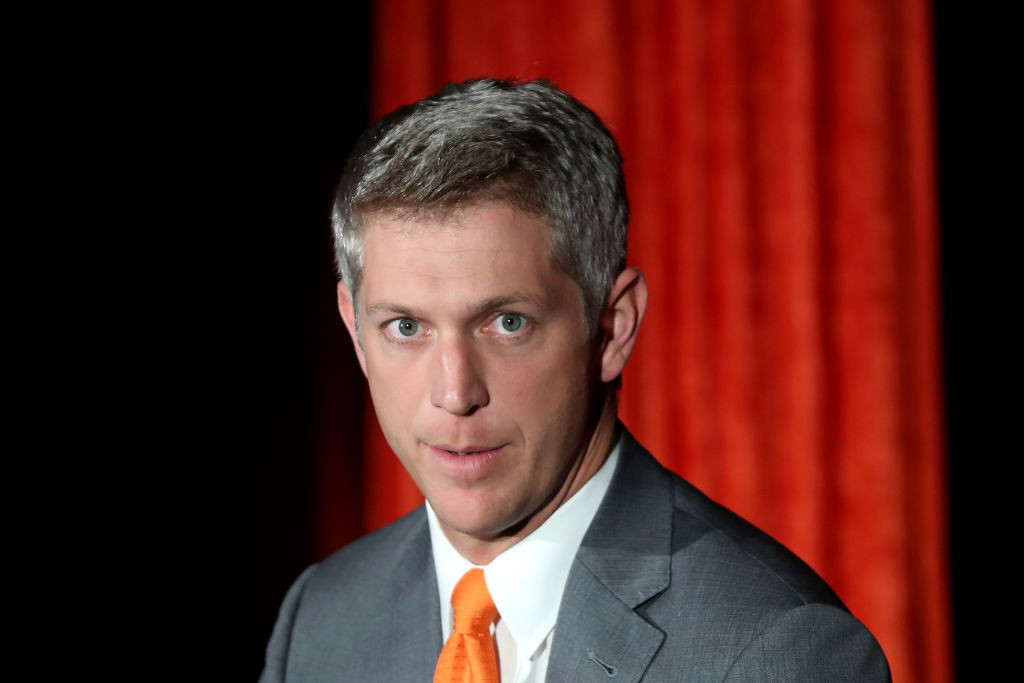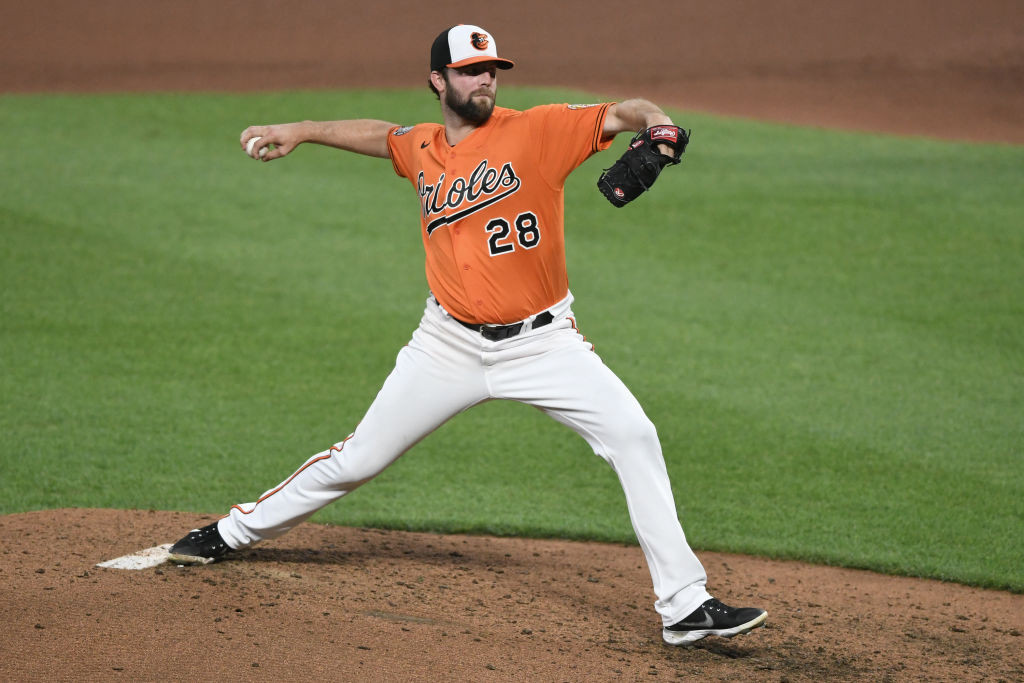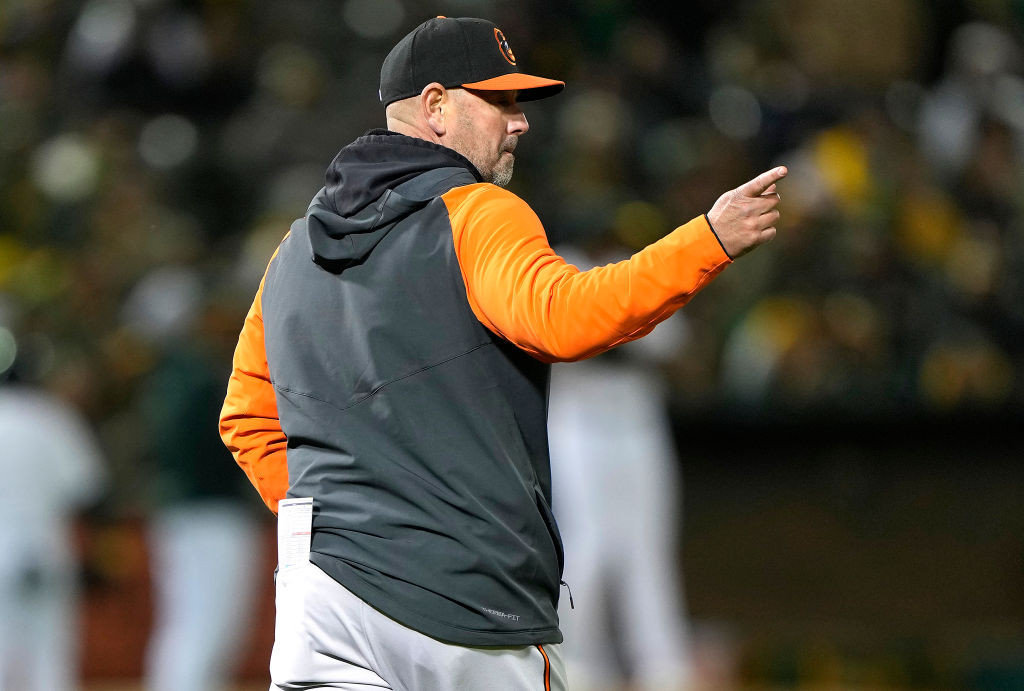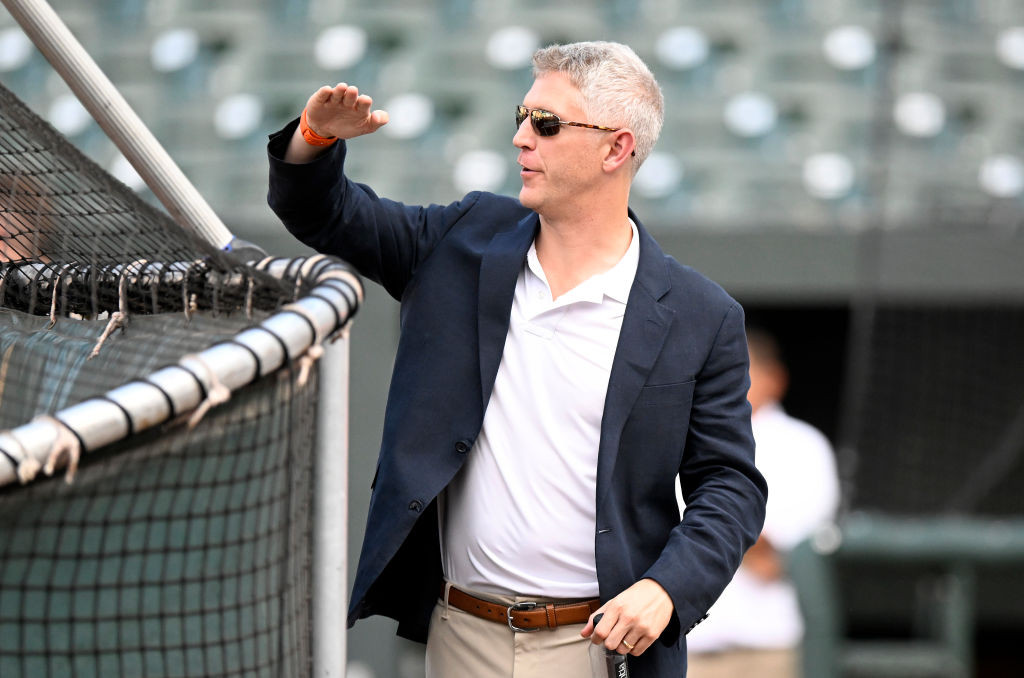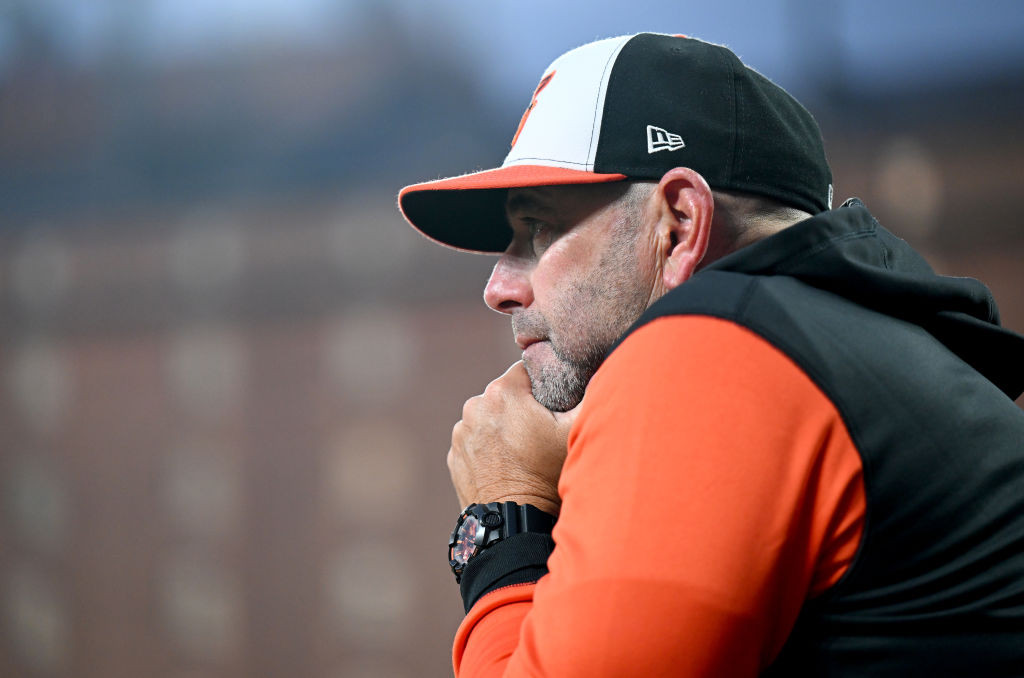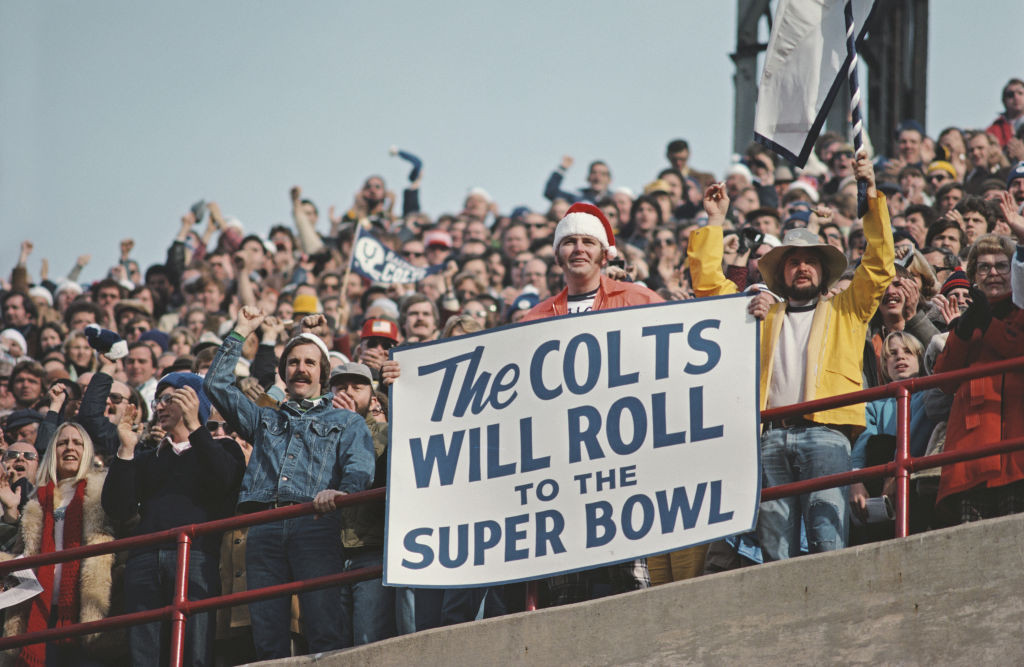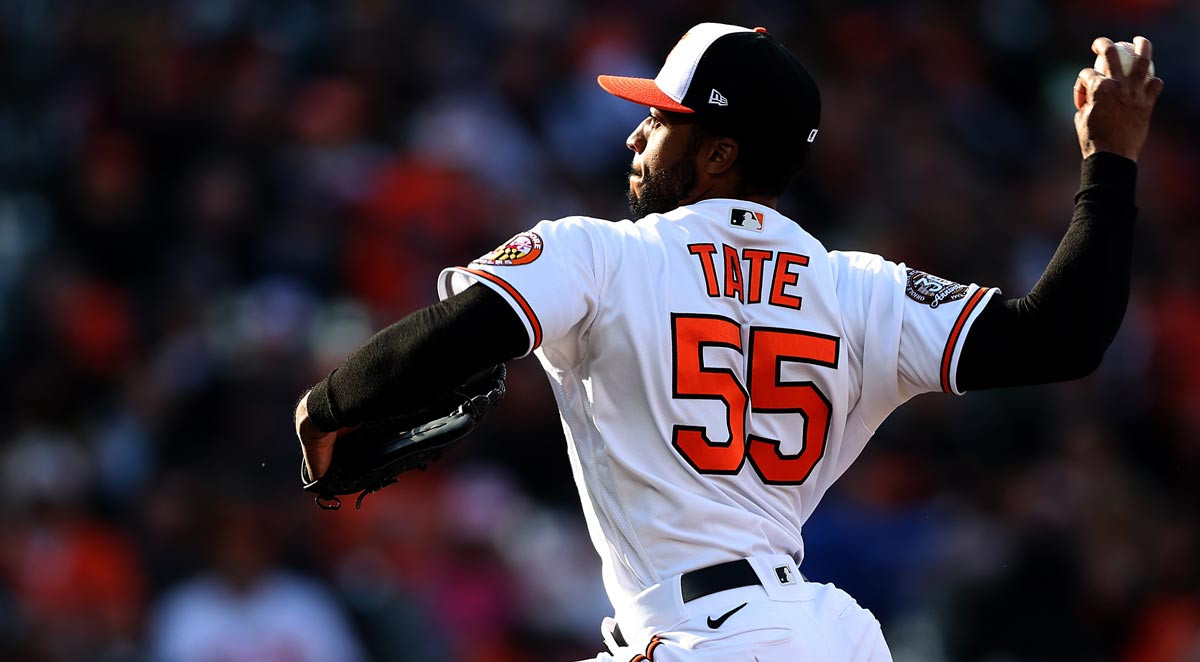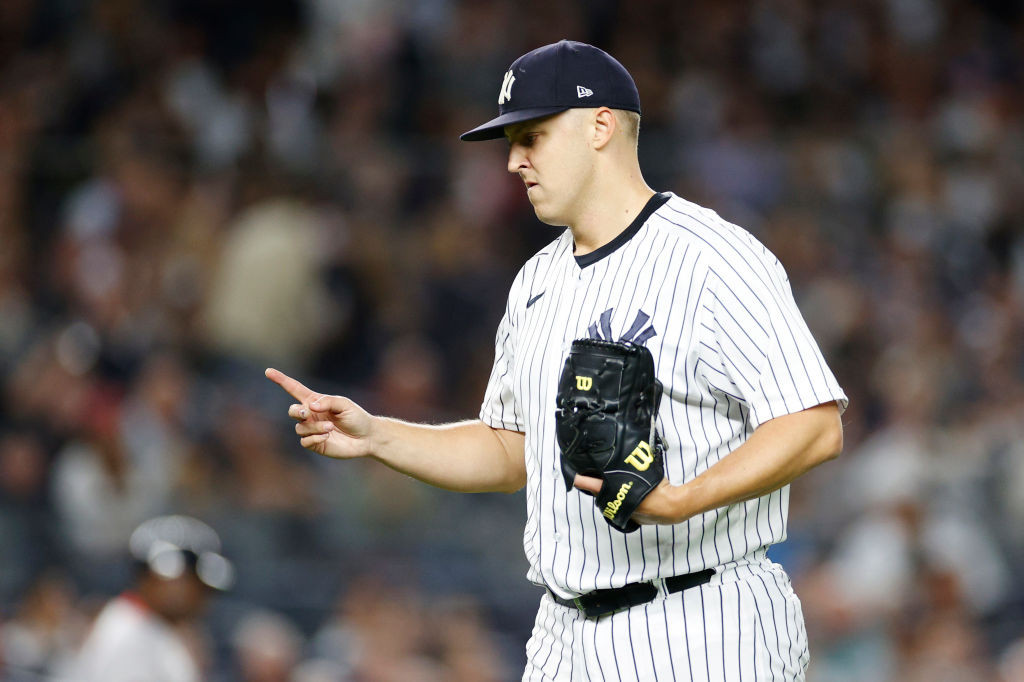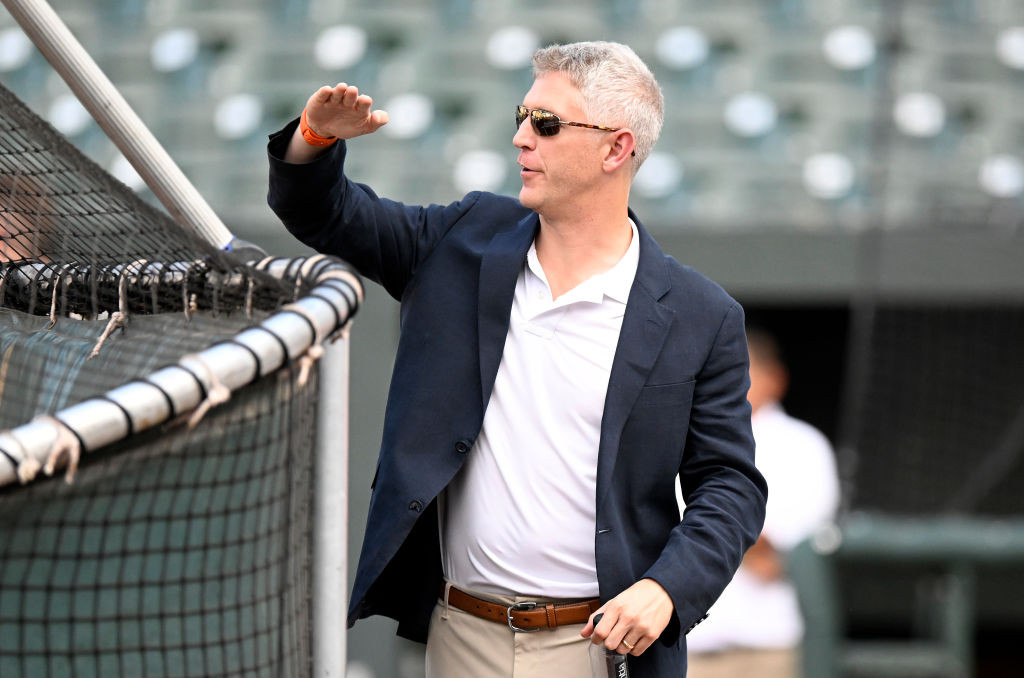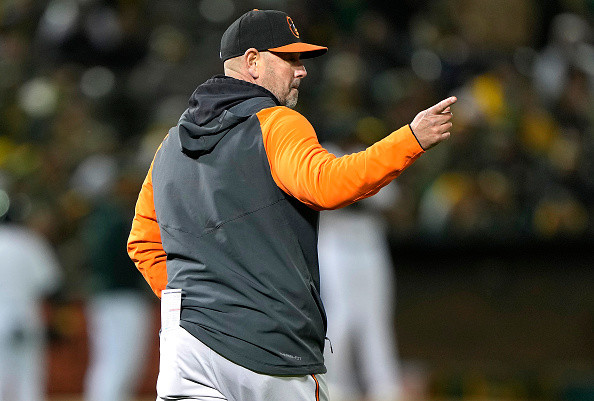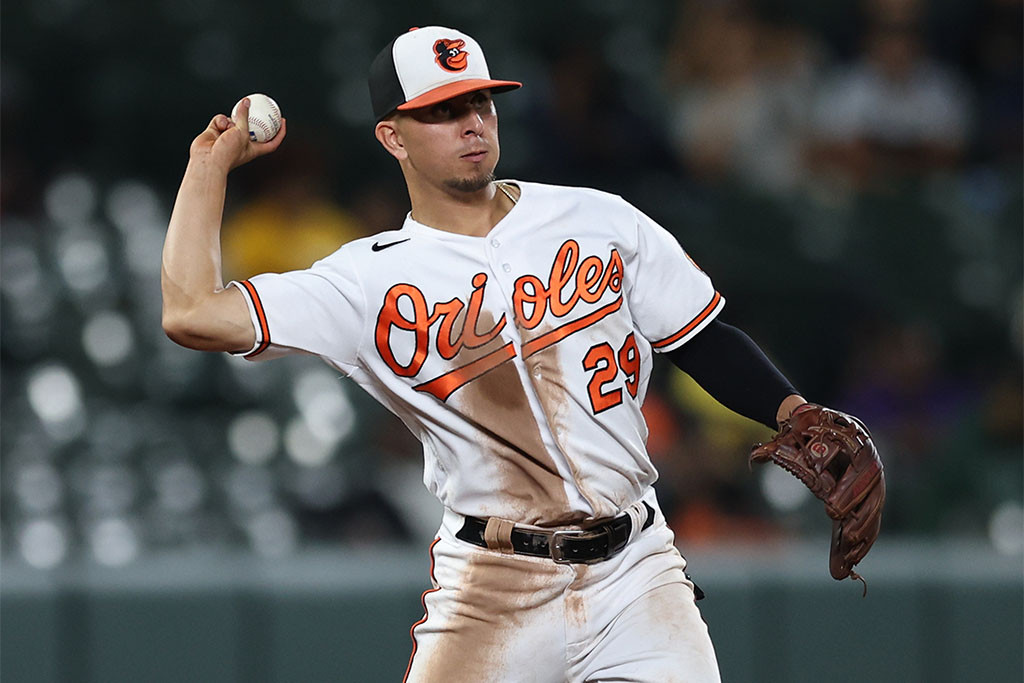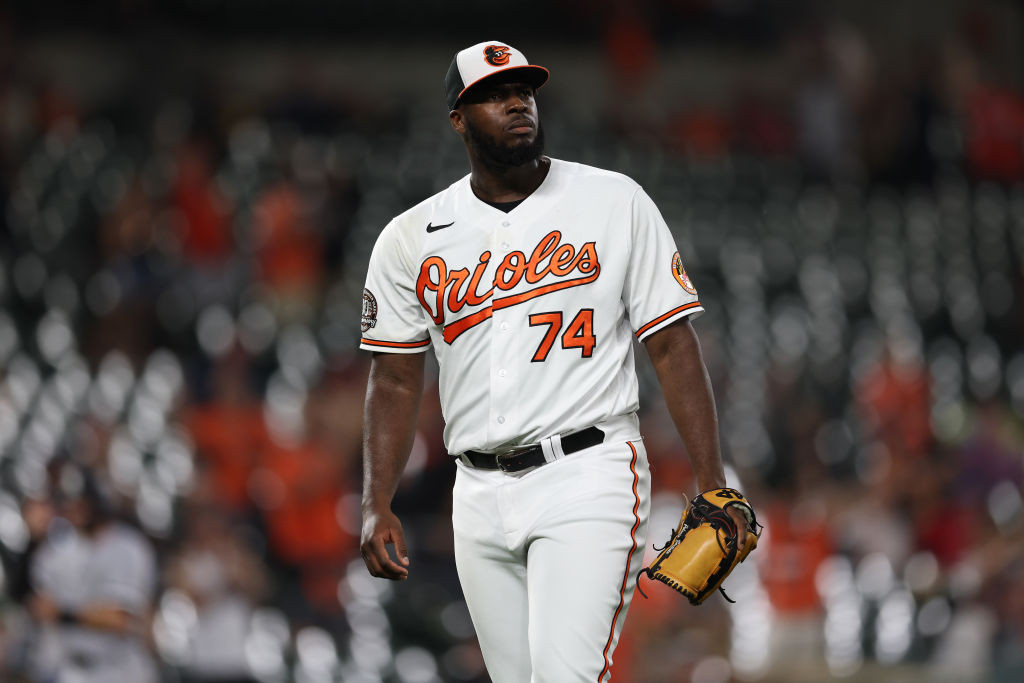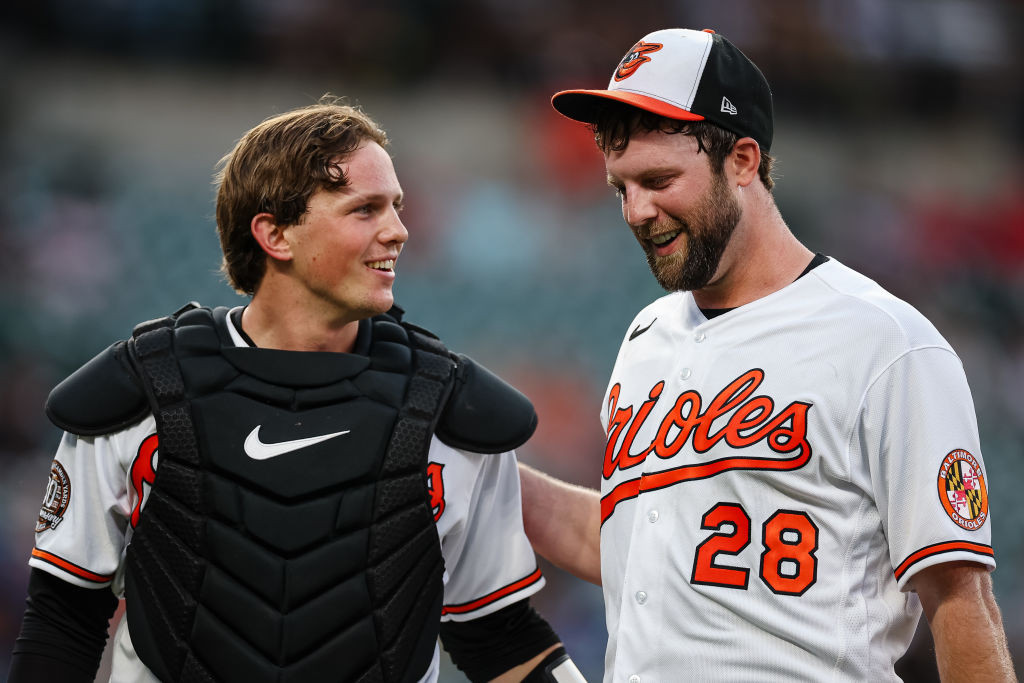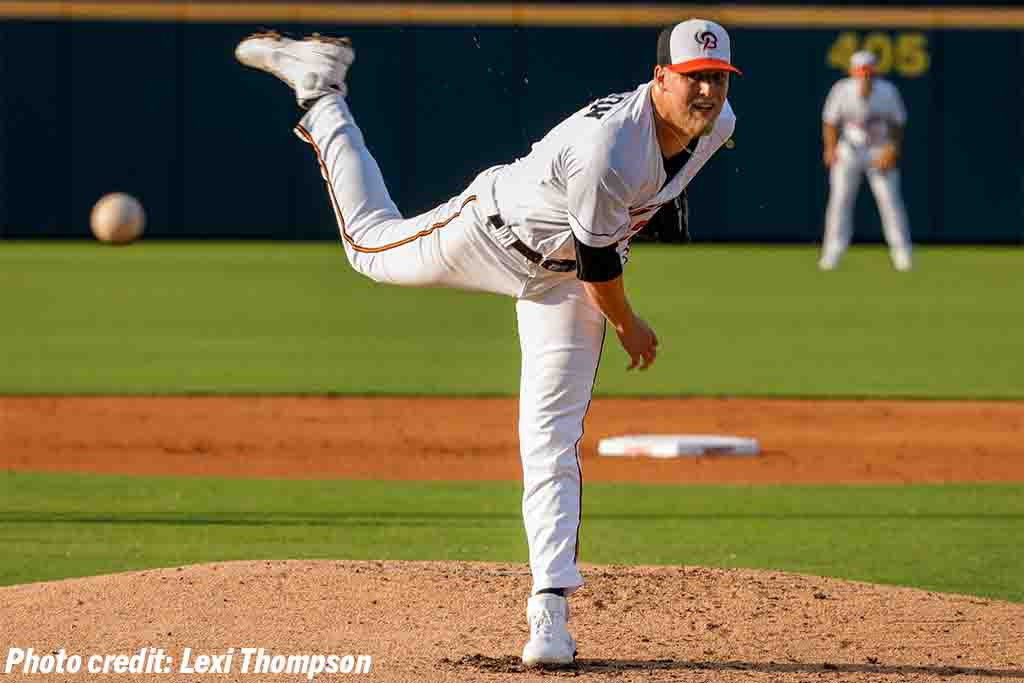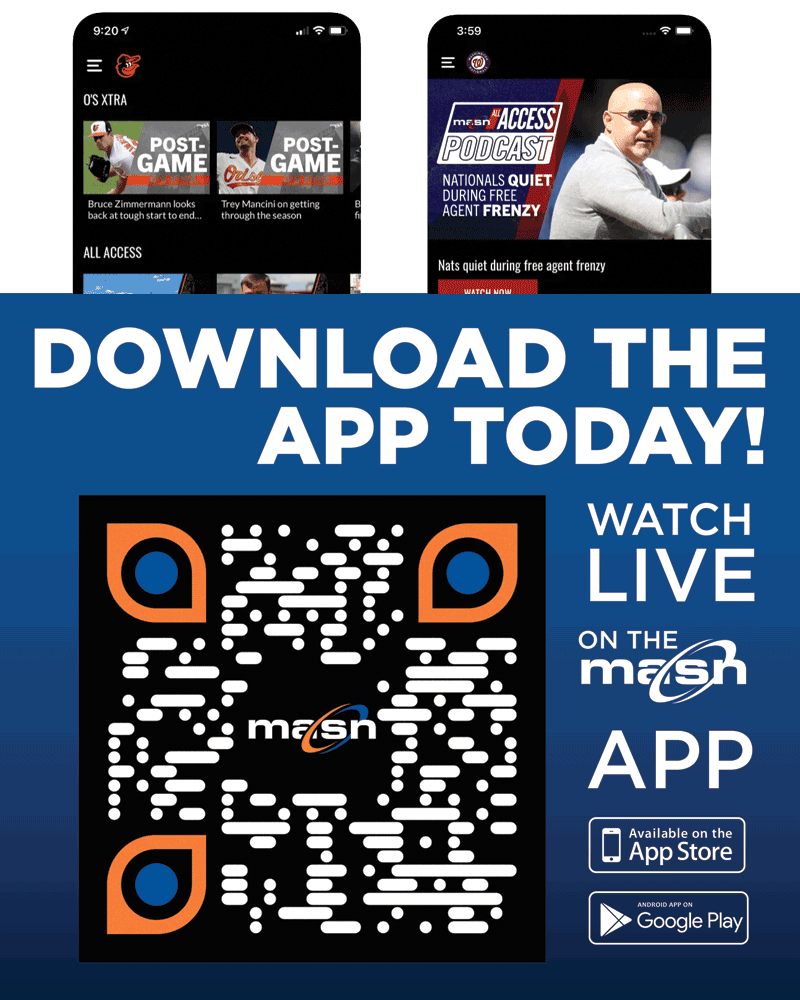A byproduct of the Arizona Fall League is the chance for scouts to get their eyes on certain players, whether for the first time or to continue evaluating and filing reports.
There’s a popular theory in baseball that allowing prospects to play in the AFL who need to be protected in the Rule 5 draft is risky because other organizations could be swayed to select them.
The Orioles are safe with outfielder Heston Kjerstad. He doesn’t need to go on the 40-man roster.
He just needs to stay healthy and keep swinging the bat as he’s done in Arizona.
Kjerstad went 3-for-4 with his first triple on Friday to raise his average to .371 with a 1.063 OPS. His 33 hits and nine doubles before yesterday led the AFL, his five home runs tied for second and his 17 RBIs and .663 slugging percentage ranked third.
For young Jackson Holliday, a lot was expected and a lot was delivered. The player the Orioles took No. 1 overall in the 2022 MLB Draft had a pretty solid 20-game pro debut.
It started with him tearing it up in the Rookie-level Florida Complex League for eight games and followed with 12 games at Single-A Delmarva where he certainly held his own.
Between the two levels at just age 18, Holliday showed a great batting eye and he walked 25 times with just 12 strikeouts. He ended the year ranked as the Orioles' No. 3 prospect behind Gunnar Henderson and Grayson Rodriguez, and in national top 100s, he is rated No. 13 by MLBPipeline.com and No. 38 by Baseball America.
In his first season after being a high school drafted player in 2019, Henderson played in 29 games in the Rookie-level Gulf Coast League and batted .259/.331/.370 with a .701 OPS, 11 walks and 28 strikeouts. He had a 9.1 walk rate and 23.1 strikeout rate.
Holliday in eight FCL games batted .409/.576/.591 with a 1.167 OPS, 10 walks and two strikeouts. In the FCL, he had a 30.3 walk rate and 6.1 strikeout rate. Then in 12 games with the Shorebirds, he hit .238/.439/.333 with a .772 OPS, 15 walks to 10 strikeouts, producing a 26.3 walk rate and 17.5 strikeout rate.
The Orioles today announced their 2023 Major League Coaching Staff. The club has named CODY ASCHE Offensive Strategy Coach. All other coaches remain in their same positions: MATT BORGSCHULTE and RYAN FULLER as Co-Hitting Coaches, TIM COSSINS as Major League Field Coordinator/Catching Instructor, FREDI GONZÁLEZ as Bench Coach, JOSÉ HERNÁNDEZ as Major League Coach, DARREN HOLMES as Assistant Pitching Coach, CHRIS HOLT as Pitching Coach/Director of Pitching, TONY MANSOLINO as Third Base Coach, and ANTHONY SANDERS as First Base Coach.
Asche (ASH-ee), 32, has been promoted to the Major League staff after serving as Upper-Level Hitting Coordinator in 2022, his first season in the Orioles organization. He began his professional coaching career in 2021 as the hitting coach for the Clearwater Threshers, the Low-A affiliate of the Philadelphia Phillies. Asche’s Major League playing career spanned parts of five seasons with the Phillies (2013-16) and Chicago White Sox (2017). He was originally selected by the Phillies in the fourth round of the 2011 First-Year Player Draft. A native of St. Charles, Mo., Asche attended the University of Nebraska and Fort Zumwalt West High School in O’Fallon, Mo.
BRANDON HYDE enters his fifth season as Manager after being named to the post prior to the 2019 campaign. In 2022, he led the Orioles to an 83-79 record, their first winning season since 2016 (89-73). He was voted the Sporting News AL Manager of the Year by fellow American League managers and has been named a finalist for the Baseball Writers’ Association of America AL Manager of the Year award.
Borgschulte and Fuller return for their second seasons as Co-Hitting Coaches and second and fourth seasons in the organization, respectively. Cossins returns for his fifth season as Major League Field Coordinator/Catching Instructor and his 22nd as a professional manager, coach, or Major League bullpen catcher. González enters his fourth season with the Orioles organization, fourth as Bench Coach, and 34th as a professional coach or manager, 10 of which were as a Major League manager. Hernández enters his fifth season on the Major League staff and 14th as a coach in the Orioles organization. Holmes enters his fourth season with the Orioles and third as Assistant Pitching Coach after being promoted to the position following the 2020 season, while Holt enters his third season as the Orioles Pitching Coach/Director of Pitching and fifth in the organization. Mansolino enters his third season as the club’s Third Base Coach and Sanders enters his fourth season as First Base Coach.
And now on with the real offseason.
The offseason for the Orioles began in a sense Oct. 6, the day after the last game, but now that the World Series is complete, the hot stove business of baseball is about to heat up. And for the Orioles, it could be a time where small moves are not their biggest activity of the offseason.
The obvious questions are these: Will the O’s add a big fish hitter, pitcher or both? Will that happen via trade or free agency, or both? Is now the first time Mike Elias will be trading young talent/prospects for major league-proven talent?
Elias has said he expects the payroll to go up and for the team to be active this winter. The 2023 Orioles' clear No. 1 goal is to make the playoffs. Playoffs or bust.
“I do continue to view this as an offseason where we are going to have the flexibility to invest in the major league payroll in a different way than I have done since I’ve been here,” Elias said at his season-ending press conference. “We feel like the time is right from a strategic standpoint.”
The first post-World Series mailbag has been emptied. Much like my hopes for a Game 7.
There’s nothing better in sports. And it delays the actual offseason for one more day.
I’ve grown to love the period of calm. A few small-scale transactions and some announcements on awards, but that’s about it.
(I picked the Astros in six games, but I digress …)
Now we’re ripe for rumors. I’ve already seen one prediction that the Orioles will sign Carlos Correa.
The Orioles have two finalists for the Baseball Writers’ Association of America awards, with manager Brandon Hyde a candidate for American League Manager of the Year and catcher Adley Rutschman a candidate for American League Rookie of the Year.
Two names that have been anticipated for months. No surprise omissions or entries.
Hyde joins the Guardians’ Terry Francona and the Mariners’ Scott Servais as finalists. Rutschman, Mariners outfielder Julio Rodriguez and Guardians outfielder Steven Kwan are vying for the rookie award.
The Sporting News already selected Hyde. Rodriguez, the only player in major league history with 25-plus home runs and 25-plus stolen bases in his debut season, won the Players Choice Award.
Hyde can become the first Orioles manager honored since Buck Showalter in 2014. Rutschman can become the first Rookie of the Year since reliever Gregg Olson in 1989.
Today's blog entry has spent a few weeks in my laptop. This was written in early September and no, I don't work that far in advance. Hardly.
But that was when the Orioles asked me to write an article that would appear in the Major League Baseball playoffs program if they made the postseason.
They didn't but hey, someone should get to read this!
The topic was building that elite pipeline, how the Orioles did it in Baltimore and how the young talent was helping the big league club turn around their losing ways. Let's begin!
The night of Sept. 3 when the Orioles played the Athletics at home, was one of the latest examples that the Baltimore farm system and player development operation was a big reason for the Orioles' turnaround in the 2022 season.
Finalists for the four Baseball Writers’ Association of America awards will be announced tonight beginning at 6 p.m. on MLB Network. Plan your meals around it.
The top three finishers will be revealed in alphabetical order, so don’t panic if it takes a while for Adley Rutschman’s name to appear among American League rookies.
Seattle’s Julio Rodriguez will be called ahead of him. Rutschman, Rodriguez and the Royals’ Bobby Witt Jr. were finalists for the Players Choice Award, with the Mariners outfielder taking the honor.
The Guardian’s Steven Kwan could bump Witt from some BBWAA ballots. It would be shocking if Rutschman or Rodriguez were excluded. Rodriguez is widely viewed as the favorite.
MLB.com’s rookie power rankings posted on Oct. 5 had Rodriguez first in the AL, followed by Rutschman, Kwan, Witt, the Twins’ Joe Ryan and the Mariners’ George Kirby.
From 1954 to 1991, it was home for the Orioles. It was also home to the Baltimore Colts, the Canadian Football League’s Baltimore Stallions and for their first two seasons, the Baltimore Ravens. In 1993, it was even home for a season to the Bowie Baysox before Prince George’s Stadium was built.
For some of us of a certain age, it just felt like ... well, home.
It was Memorial Stadium on 33rd Street.
Looking back, we can admit now it was an old rickety stadium that came up short in a few areas. But when I was kid the anticipation of just going to see a game there was amazing, topped only by actually entering the place itself. It was special and I thought it was the greatest place any kid could ever go.
The memories of so many great games with so many great friends blur a bit now, but that feeling never leaves you. You always remember that. When I was a kid, it was that excited feeling of walking up the ramp to see the green grass and then watch the Orioles take the field. They always seemed to be among the best teams in baseball.
We are getting into the weeds a bit here today, digging into some pitching numbers that might be interesting to look at and note. Maybe they actually tell us something about Orioles pitching as well.
First, in the simplest terms, O’s pitchers, as a staff, threw fewer fastballs and changeups in 2022 compared to 2021. They threw more sliders and cutters and a similar number of curveballs.
In 2021, the Orioles used fastballs (four- and two-seamers combined) 51.0 percent, and that dropped to 47.3 this year. Their average fastball velocity increased, however, from 93.0 mph in 2021, which ranked 22nd in the major leagues, to 93.8 mph this season, tying them for 12th in the bigs. Some of the flamethrowers in the bullpen, no doubt, helped increase that average.
In 2021, the Orioles led the majors in throwing changeups, doing so 15.7 percent of the time. This season that percentage dropped to 13.3, which was still sixth-highest in baseball. That means the O’s still really like changeups.
In watching the team this year, there were nights I said to myself, ‘Hey, self, the O’s love the cutter.’ They used that pitch 5.2 percent of the time in ’21 (to rank 20th in the majors) and increased that this year to 8.4 percent (10th in baseball).
WATCH THE MASN ALL ACCESS PODCAST
The Baltimore Orioles are in uncharted territory.
When Mike Elias was hired in November 2018, the Orioles were in full rebuild mode. The O’s had already parted ways with Manny Machado, Jonathan Schoop, Zack Britton, Kevin Gausman and Darren O’Day.
Offseasons under Elias have been approached in similar ways: Sign low-cost veterans that can help the team in the short-term and hope they can be flipped for prospects at the deadline. That approach, among other things, led to the organization’s No. 1 farm system ranking, and allowed the Orioles to find diamonds in the rough through waiver claims, trades and small-money signings.
Elias’ patient approach culminated in a 2022 season in which the Orioles vastly out-performed expectations, racking up 83 wins and finishing just three games out of the final American League Wild Card spot.
The Orioles have made the following roster moves:
- Agreed to terms with OF Jake Cave on a one-year contract for the 2023 season.
- RHP Chris Ellis has elected free agency in lieu of accepting an outright assignment to Triple-A Norfolk.
- C Aramis Garcia has elected free agency in lieu of accepting an outright assignment to Triple-A Norfolk.
If the Orioles' rebuilding efforts were and are at least partially being modeled after the Astros, is there a way to compare where Baltimore is in the process in looking at Houston’s winning run?
Sure we can look at it and it provides an interesting exercise. But it is certainly not an apples to apples comparison.
The Orioles lost 100 or more games for three straight full seasons from 2018 through 2021. Houston did that from 2011-2013. The 2014 Astros then went 70-92 taking a step forward and breaking out of the 100-loss rut. The Orioles did that going 83-79 last season. The 2015 Houston team then won 86 and made the American League Division Series, so they were in the postseason in year two post 100-loss seasons and that timeframe would put Baltimore in the 2023 playoffs. The 2016 Astros though won just 84 and missed out on the playoffs.
But that all led to 2017, a tainted World Series win, but also the beginning of a run of four World Series appearances in six years. Which team wouldn’t take that run of success? The Orioles did that once of course in yesteryear, from 1966 to 1971, winning the WS twice in the greatest run of success in team history.
So Houston had the 100-loss years, then three seasons with one playoff appearance leading into six years of consistent winning and World Series appearances. If the O’s followed that exactly, which is unlikely of course, they would be looking at one playoff appearance over the next two years with things really humming starting in 2025.
On the first night of play in the Arizona Fall League, Orioles outfield prospect Heston Kjerstad crushed a homer to right-center and he’s been hitting ever since. Today it seems quite likely that he will be selected to play in the AFL’s Fall Stars game this Sunday. He is taking part in the AFL Home Run Derby on Saturday.
Through Wednesday in 19 AFL games, Kjerstad has hit .353/.385/.624 with a 1.009 OPS, eight doubles, five homers and 17 RBIs. He was tied for the AFL homer lead and ranks sixth in the league in OPS.
Jim Callis, senior writer for MLBPipeline.com, saw Kjerstad play in person earlier in the AFL season.
“On opening day, I saw him hit a massive home run at Scottsdale Stadium,” said Callis. “The good news for Orioles fans is he looks like the guy, the No. 2 pick in the draft from a few years ago. He looks like the guy I thought was the best left-handed college power hitter in that draft. I had seen him at the College World Series in the past and he’s got big left-handed power. It's power over hit (tool). He’s got about a 30 percent strikeout rate in the Fall League. He’s always had some strikeouts but still managed to hit for average if that makes sense.
“He looks like the type of guy that could hit .260 with maybe 30 homers. He’s not a blazing runner or anything, but he moves well enough. He’s got a strong arm. I haven’t talked to the Orioles since I’ve seen him, but I have to think they are quite pleased with how he’s looked.”
The Orioles can’t be assured of anything next season based on their success in 2022. It might be a launching pad. It might raise hopes and expectations that can’t be met.
If momentum is the next day’s starting pitcher, it can’t be relied on to sustain through the winter and spring. The slate is clean for everybody.
Though it’s still early, with the last game played only a month ago, the Orioles are anticipating a return to absolute normalcy.
The pandemic shut down spring training in 2020, chopped the schedule down to 60 games and destroyed the minor league season, and its influence remained in 2021. The expiration of the old collective bargaining agreement last December led to a prolonged shutdown, late start to a shortened spring training, and significant adjustments to the schedule and how earlier games were managed.
Everyone had the same challenges, but the field wasn’t level. Some teams were better equipped to handle the strife than others.
The surprised reactions this week to Ramón Urías winning a Gold Glove at third base weren’t shared by the Orioles infielder.
Urías knew the numbers. He understood that his chances were good. He didn’t concede the honor to Toronto’s Matt Chapman or Cleveland’s José Ramírez.
Let the others express their doubts and skepticism.
The 14 Defensive Runs Saved, 10.9 Ultimate Zone Rating and 11.1 SABR Defensive Index computed for Urías led all American League third basemen. He was armed with solid arguments.
“I knew that I had a shot to win at Gold Glove this year, especially because of the metrics,” Urías said today on a video call with media.
These stats seem pretty good. And probably just about any pitcher would take such numbers.
* Top three percent of Major League Baseball in strikeout percentage.
* Top one percent in velocity.
* Top eight percent in whiff percentage and expected slugging against.
* Ranks 10th in the American League in ERA among pitchers throwing 60 or more innings.
The World Series is three games deep, stalled a bit after Monday night’s postponement in Philadelphia. The real offseason also is on hold, with some teams making smaller 40-man roster moves until the heavy lifting commences.
For example, the Orioles must decide five days after the World Series whether to exercise Jordan Lyles’ $11 million option. That’s a big one.
They can keep him, they can put him back on the free agent market with a $1 million buyout and move on, or they can decline it and attempt to re-sign him to a lesser deal.
There's also the pick up and trade possibility, which happened with shortstop José Iglesias. Probably not, but it has to be mentioned.
Players on the 60-day injured list will return to the 40-man roster. John Means is the last Oriole after Chris Ellis’ outright to Triple-A Norfolk. Other players who are pending free agents finally can hit the market after the World Series.
Rawlings today announced that RAMÓN URÍAS has been named the 2022 American League Gold Glove Award recipient at third base. The award is voted on by Major League managers and coaches, which accounts for 75 percent of the selection process. The other 25 percent is based on the SABR Defensive Index™ (SDI).
Urías, 28, led AL third basemen and finished third among all AL fielders with an 11.1 SDI. He was 3.9 SDI better than the next qualified AL third baseman. Urías’ SDI is the best by an Orioles fielder since J.J. HARDY’S 11.9 in 2016 and the best by a Baltimore third baseman since MANNY MACHADO’S 11.8 in 2015. SDI is a measure of the number of runs saved by a player's defensive performance over the course of a season, compared to the average defensive player at that position. The SDI combines measures from six different defensive data sources and includes factors that rate a defender’s arm strength and accuracy, range and sure-handedness, and the number of “excellent” and “poor” fielding plays made.
He also led AL third basemen with 14 Defensive Runs Saved (DRS), per Sports Info Solutions, and with a 10.9 Ultimate Zone Rating (UZR), per FanGraphs. Urías’ DRS is the best in a single season by an O’s third baseman since Machado’s 18 in 2015. His UZR is the best by an Orioles defender since Hardy’s 11.4 in 2014 and the best by a Baltimore third baseman since Machado’s 20.8 in 2013. Both DRS and UZR take a variety of game situations into account including infielders’ performance on balls hit in the air, range, throwing success, double play ability, fielding bunts, and the impact of good plays/misplays that are not accounted for in other components.
Urías tied for the AL lead among third basemen with seven Outs Above Average (OAA), per Statcast. Since MLB began tracking in 2016, his OAA are tied with Machado for the most by an Orioles third baseman. OAA is a range-based metric of skill that shows how many outs a player has saved.
This season, he finished with eight errors in 259 total chances at third base for a .969 fielding percentage and nine errors in 350 combined total chances between second base, third base, and shortstop for a .974 overall fielding percentage.
Ryan Watson didn’t seek out a trainer during the offseason to decrease his chances of being injured. It was more about eliminating some mobility issues, concentrating on hip work and “becoming very aware of his body because he’s so tall,” said Theo Aasen, a strength and conditioning coach who owns Optimal Athlete Kollective in Tampa.
Never did the 6-foot-5 Watson imagine that he’d rise above others in the Orioles organization to be named its minor league Pitcher of the Year. An unexpected byproduct of the many improvements that included a sharper slider and an uptick in fastball velocity.
Watson often worked in the 89-91 mph range last year in his first professional season. He climbed to 93-95 mph this summer and was able to reach 96-97.
Watson’s representative, Francis Marquez of The MAS+ Agency, suggested that the right-hander meet with Aasen.
“He’s never really lifted in a style that I train, so we taught him how to lift properly and use a full range of strength,” said Aasen, who also worked with Austin Hays, changing the outfielder’s weightlifting routine to get his body more in baseball shape, with improved flexibility, rather than just bulking up. Hays avoided the injured list this year.

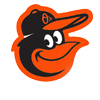
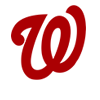

-1745819772711.png)
